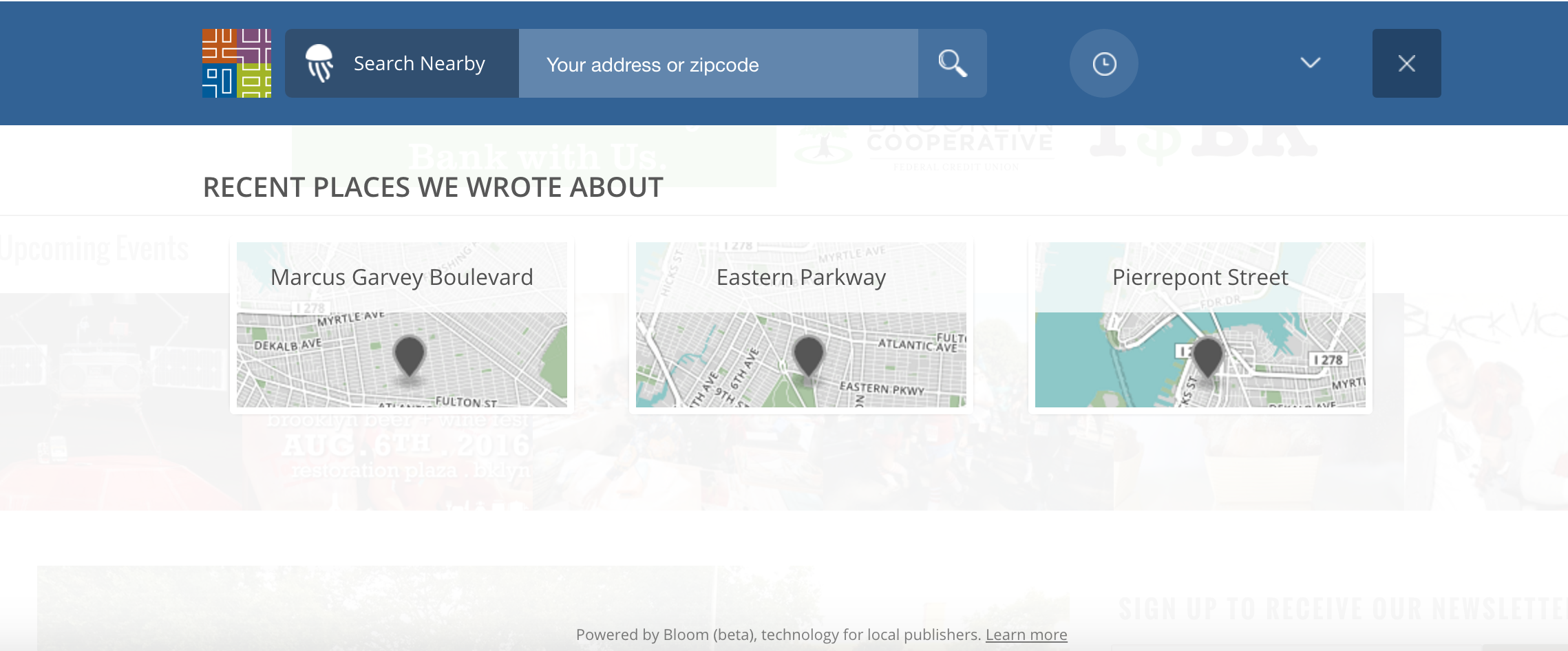When the Pokemon Go craze hit last month, some — including Poynter columnist Melody Kramer, wondered whether the popular app’s central features could be applied to journalism. Others were skeptical.
But for Stephen Jefferson, the conversation seemed awfully familiar. Since late 2014, he’s been working on Bloom, a small startup that applies one of Pokemon Go’s key tenets to local news.
Except instead of Pokemon, the former Tow-Knight fellow is hoping to help readers find local news using geolocation, the real-world geographic location used in Google Maps and other apps.
As consumption habits shift to social media, with giants like Facebook and Twitter playing middle-man for much of what people read and watch, news has been decoupled from its geographic origin, Jefferson said. He wants to provide an alternative experience.
“It’s kind of like what people used to do: Pick up a newspaper at the corner store, and they had local news in-hand,” Jefferson said. “Nowadays, all news blends together online and on social media. So what we’re doing is putting the control back into…local hands.”
Here’s the way it works: A news organization installs a plugin developed by Bloom that allows editors, reporters and producers to manually tag each piece of content with a specific location. Then, readers can use a search function on the publication’s website to search by address or zip code.
Last month, Bloom launched with its first publication, the hyperlocal Brooklyn-based BK Reader. Using Bloom’s interface, readers can view all the stories the Reader recently published about a specific neighborhood or geographic area.
As of late July, there were between 400 and 500 stories indexed using Bloom, Jefferson said. Over time, the mosaic of geotagged stories could shed some insights about the communities they describe, he said.
“Local publishers…have some interesting local data, but it’s not being used efficiently,” Jefferson said. “So by putting the data on the map and by making it searchable, we believe that we’re elevating some of this local content.”

(Screenshot, The Brooklyn Reader)
This isn’t the first time geolocation has been applied to news discovery. Niantic, Inc., the company behind Pokemon Go, previously launched “Field Trip,” an app aimed at helping users find “cool, hidden, and unique things in the world around you.” Publishers can join up and create content tagged to specific coordinates that could be discovered by users in their peregrinations.
As of December 2013, about 130 publishers, including Atlas Obscura and Thrillist, had signed up for the app, according to AllThingsD. But the app has not seen the kind of watercooler significance that has defined Pokemon Go, and news organizations certainly aren’t wringing their hands over their Field Trip strategies.
Based on the Twitter discussion surrounding Pokemon Go, geolocation is a hard-sell for local news for a couple of reasons: First, using automation to assign specific addresses to stories remains a hurdle. As is, geotagging has to be done manually, which can become a ponderous task at scale.
Secondly, there’s the question of relevance: Would users actually care about a news story on their block? What if it was old, or just irrelevant? Just because a story’s nearby doesn’t necessesarily make it interesting.
Jefferson is hoping that the experiment with the Brooklyn Reader is a precursor to wider adoption of Bloom, which he’s bootstrapped with one other colleague. Eventually, he plans to line up some funding and experiment with other applications — building a mobile app, for example, or creating something that could be embedded on social media.
The bottom-line goal, he says, is to help both news creators and news consumers.
“There could be a neighborhood in Brooklyn that’s completely missed, that’s not being reported on,” he said. “This could be something that Bloom could help determine for the publisher. So we’re helping the publisher improve user experience and also find out where coverage is lacking around the neighborhoods they serve.”






